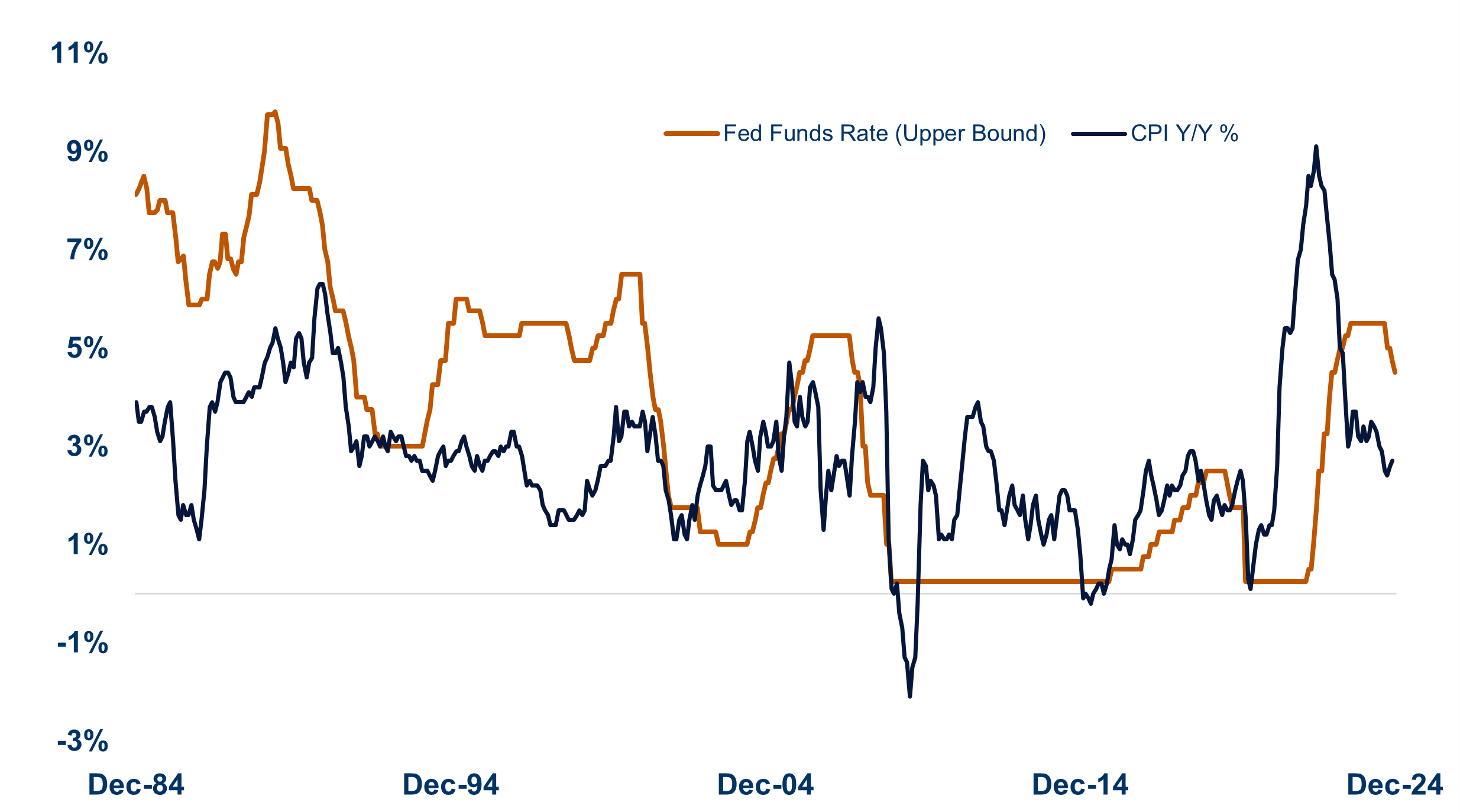Key Takeaways:
- Annual inflation accelerated up to 2.9% in December from higher energy and food prices.
- Stripping out food and energy, core inflation rose 0.2% from a month ago, less than expected and bringing annual core inflation down to 3.2%.
- Airfares rose 3.9% in December, perhaps playing some catch-up from the minimal rise in November. We know from TSA throughput data that demand for travel is still very high, putting upward pressure on travel costs.
- Medical care prices are softening, and prescription drug prices were unchanged in December.
- In a separate release this morning, manufacturers in the New York region reported a sharp increase in prices paid so far in January.
What’s Moving?
The Consumer Price Index (CPI) rose by 2.9% on an annual basis in December, slightly higher than the forecasted 2.8%. This indicates that inflation remains stubbornly above the Federal Reserve's target of 2%.
Core inflation, which excludes volatile food and energy prices, increased by 0.2% in December, keeping the annual rate steady at 3.3%.
Both food and energy prices saw significant increases, with energy prices surging by 2.6% and gasoline prices jumping by 4.4%. Besides energy, labor costs are another factor behind sticky inflation. The lingering effects of the COVID-19 pandemic continued to impact labor supply, particularly in sectors like healthcare and car repairs.
Consumer prices for goods were on a different trajectory than those for services. While goods prices had been falling due to the unwinding of pandemic-related supply-chain bottlenecks, they recently flatlined or edged up. However, prices for services, such as healthcare and car repairs, generally rose due to higher labor costs and auto prices.
What Will the Fed Do Next?
Federal Reserve (Fed) Chair Jerome Powell has ongoing concerns about inflation. He highlighted several factors contributing to stubbornly high inflation rates, including rising costs in sectors like housing and automobile insurance. Natural disasters, such as the fires out west and the recent hurricanes in the east, will likely drive up insurance costs, adding to inflation pressures. Last summer, in “Uninsured Motorists Are Driving Up Rates” I wrote that more drivers with no car insurance or underinsured are also a nagging problem and insurance rates still might have upside risk from uninsured motorists.
Managing the “Powell Paradox”
Powell has emphasized the need for a cautious approach, indicating that the Fed may need to keep interest rates higher for longer to combat inflation. Given the latest inflation release, the Fed will not likely cut rates until this summer. At last year’s news conference, Powell also mentioned the "Powell Paradox", where his dovish statements sometimes lead to market optimism, which can fuel inflationary pressures. Investors should remain focused on the long term, especially during this period of flux.
Overall, Powell is focused on achieving the Fed's dual mandate — price stability and maximum employment — although he acknowledges the challenges posed by external factors and economic uncertainties.
We expect stocks to move modestly higher in 2025 while acknowledging reasonable upside and downside scenarios. We cannot rule out the possibility of short-term weakness as sentiment remains stretched and a lot of good news is priced into markets. Upside support could come from economic growth, a supportive Fed, strong corporate profits, and supportive policies from the Trump administration.
The most likely downside scenarios involve re-accelerating inflation, higher interest rates, and geopolitical threats that do economic harm. If inflation re-accelerates, equities may need to readjust to what could be a slower and shallower Fed rate-cutting cycle than markets are currently pricing in.


